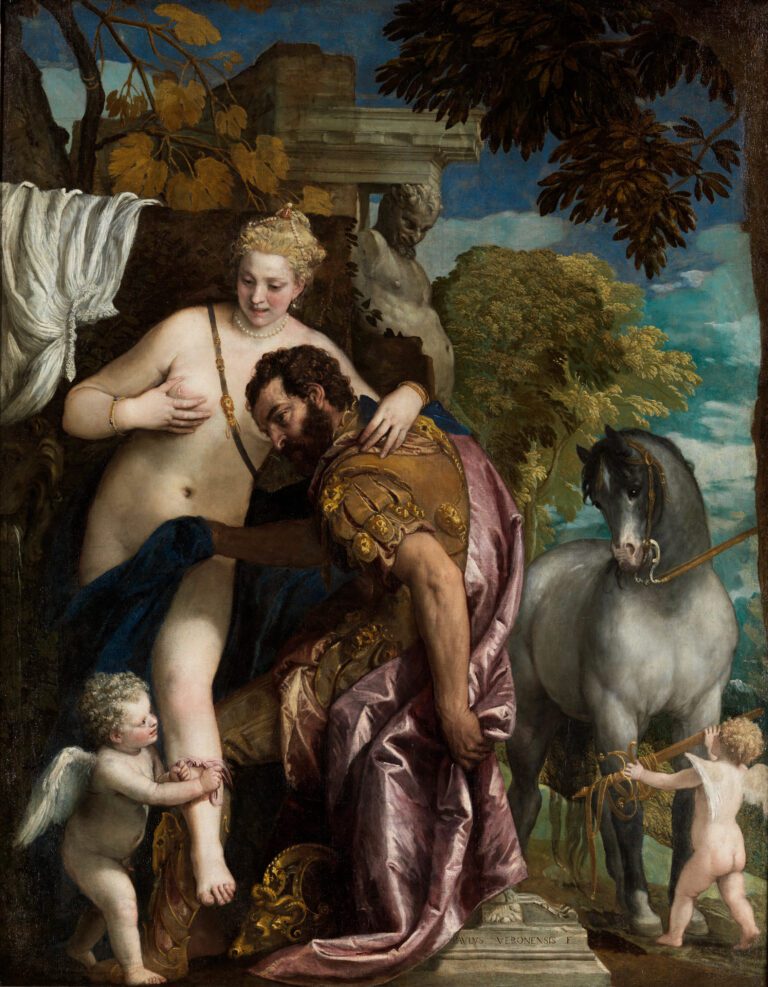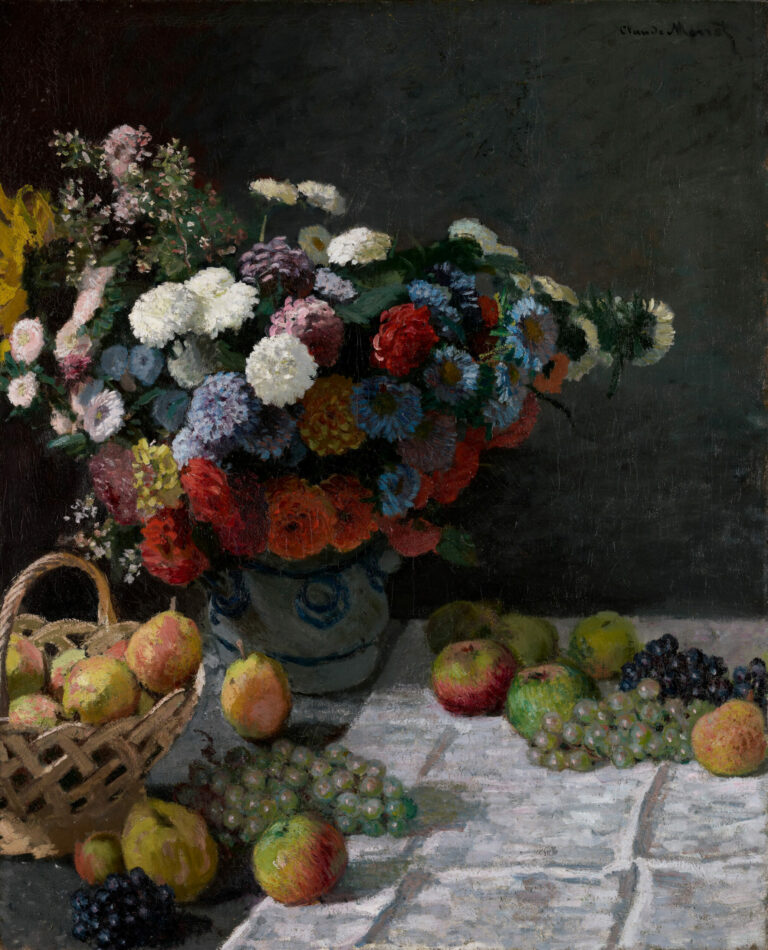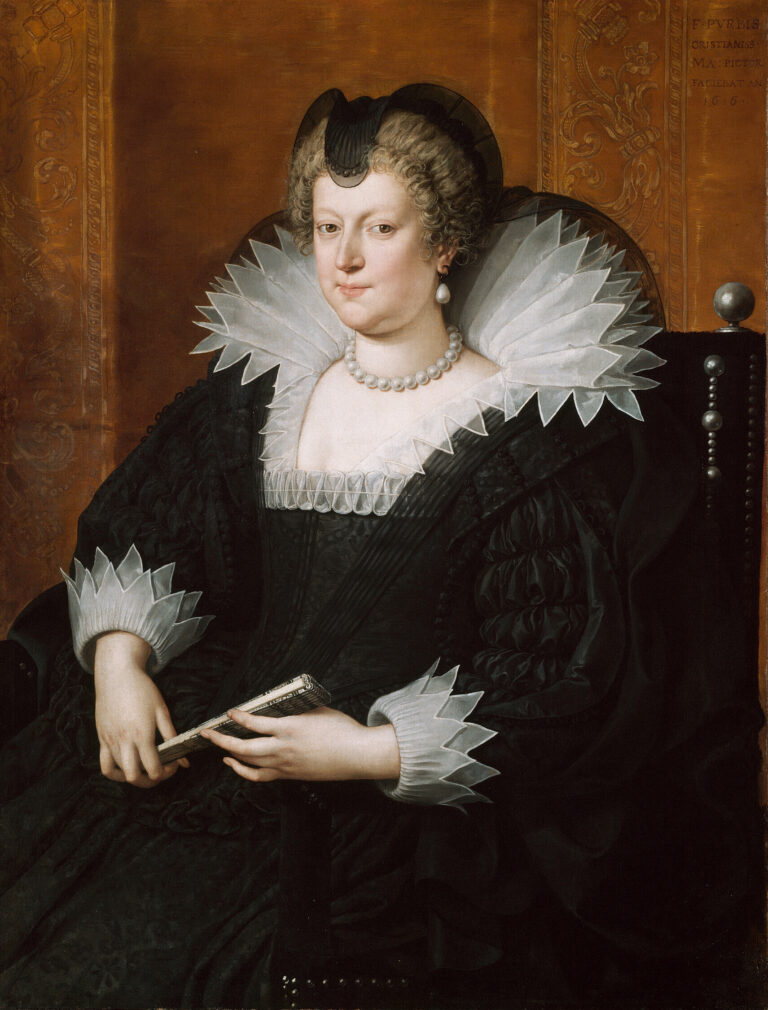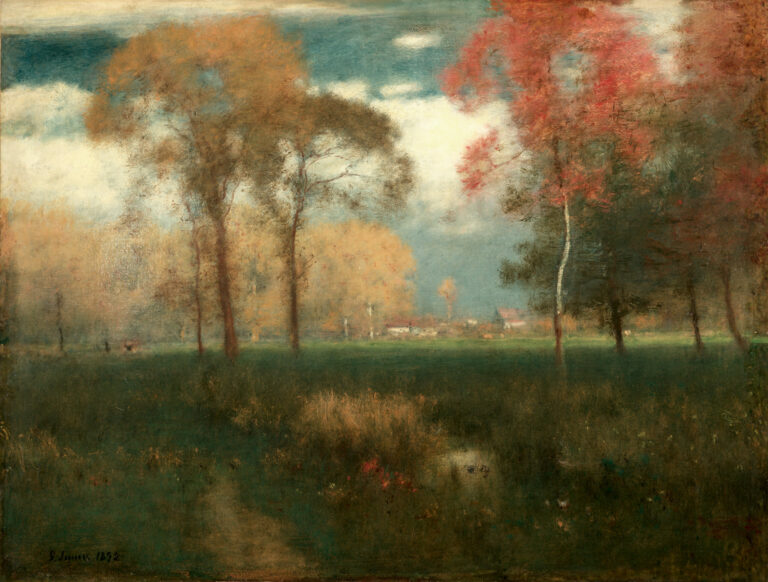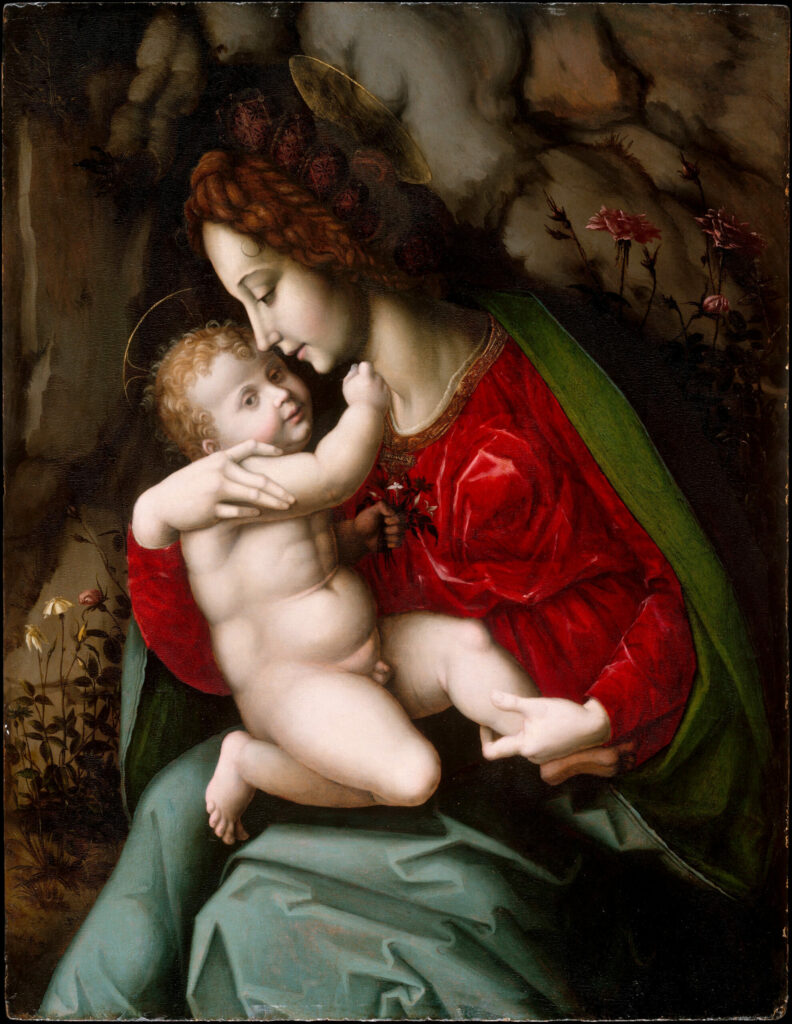
This work testifies to Bachiacca’s technical mastery and his place within the Florentine artistic circle of the early 16th century.
The composition reveals the decisive influence of the High Renaissance masters, particularly evident in the sculptural modeling of the bodies and the pyramidal organization of the sacred group.
The Virgin, draped in a sumptuous red mantle enhanced with green, presents flesh tones of exceptional refinement, while the Christ Child manifests that vitality characteristic of Florentine art. The rocky background, punctuated with minutely observed vegetation, reveals the attention paid to botanical details: jasmine symbolizing Marian purity, cornflowers evoking divine simplicity, roses and wild roses recalling Christ’s Passion. This floral iconography enriches the spiritual dimension of the work.
To learn more
- Madonna and Child, by Francesco d’Ubertino Verdi, called Bachiacca, Probably from the early 1520s
- 34 1/4 x 26 1/2 in. (87 x 67.3 cm)
- The Metropolitan Museum of Art, Fifth Avenue, New York, displayed in gallery 537
- https://www.metmuseum.org/art/collection/search/435595
Florentine painter of the first half of the 16th century, Francesco d’Ubertino, called Bachiacca (1494-1557), occupies a singular position in the artistic panorama of the late Renaissance. Trained in Perugino’s workshop, he quickly developed a personal style blending Northern influences with Tuscan tradition. His association with Andrea del Sarto and Francesco Granacci placed him at the heart of Florentine pictorial innovations. A recognized specialist in religious and secular painting, Bachiacca excelled in the art of portraiture and complex allegorical compositions. His technique, with the precision of a goldsmith, reveals particular attention to decorative details and material effects. Though less famous than his contemporaries, he contributed significantly to the renewal of Florentine art.



